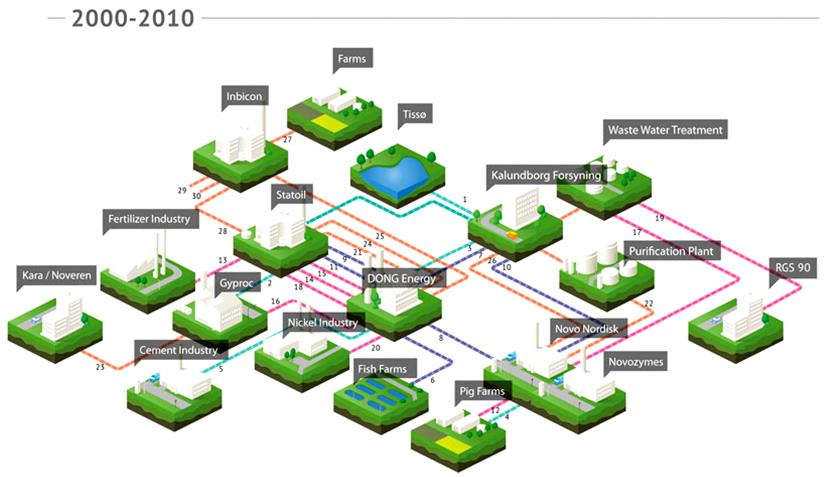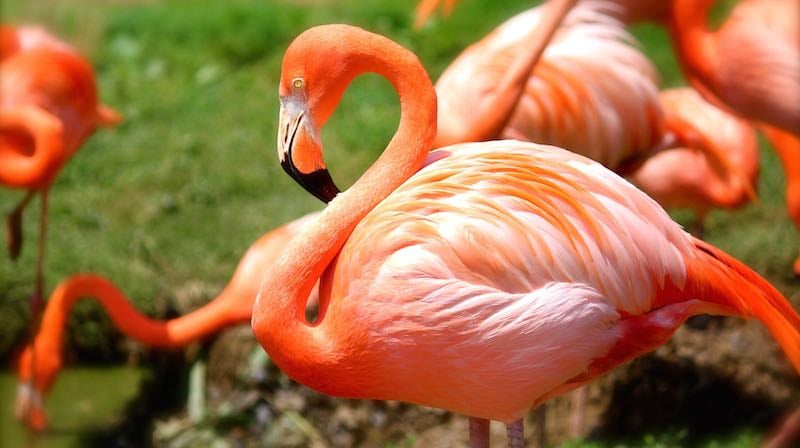A project at the Symbiosis Center Denmark has found a way to use Algae brewing bio-reactors to produce proteins for use in the Biotech industry. One such protein is the hotly sought after in biomedical research is Astaxanthin, also known for making Flamingo birds pink.
 The Center brings together many biotech businesses, which recycle each others waste for materials to use in their own manufacturing process, and vice versa; a wonderful type of Economoy-symbiosis. The cycling center, also known as Klaundborg Symbiosis, is a closed loop ecosystem which has now accumulated up to 30 conduits installed between participating businesses.
The Center brings together many biotech businesses, which recycle each others waste for materials to use in their own manufacturing process, and vice versa; a wonderful type of Economoy-symbiosis. The cycling center, also known as Klaundborg Symbiosis, is a closed loop ecosystem which has now accumulated up to 30 conduits installed between participating businesses.
The Center is an impressive feat of collaboration between local private and public infrastructure, and has proven to be a great platform for innovation too. A PhD group from the Technical University of Denmark (DTU) have been investigating the industrial applications of the center (which they have nicknamed the ‘Algae Cathedral’) to produce proteins for businesses.

Patrick Uldall Noerregaard from the National Institute of Aquatic Resources at DTU (DTU Aqua), studies the Algae Reactor at the Center, which has had funding the EU Commission (as part of the FP7 program). You can appreciate where the nickname has come from, given its construction using 10 metre tall glass panels, stained bright green from the algal broth which they hold.
The project focuses on the potential production of the protein Astaxanthin, which is the pink pigment which gives crustaceans (prawns, crayfish) and Salmon their appealing colouration. The prices of such a compound can reach €20,000 per kilo, although it is a naturally occurring carotenoid in red algae.

Interesting note: Flamingos also get their pink colour from this pigment which is ingested through their food (small crustaceans which get consume the algae). However, captive flamingos are often fed non-natural sources of crustaceans, meaning the Astaxanthin protein is added to their food artificially (so the public can still admire their colours).
Astaxanthin is also being investigated for benefits as a dietary supplement. It could play the role of a powerful antioxidant, as some pre-clinical studies suggests. The ultimate goal being to be an effective therapeutic tool for several diseases, including cardiovascular, immune, inflammation, and neuro-degenerative concerns. Click here for more info.
This Danish project is crazy in the way it converts CO2 into a highly valuable protein thanks to an innovative algae-based production process. Denmark, and Scandinavia in general, have always been in the forefront of sustainable development and this project illustrates it perfectly.
Video on the Symbiosis Center Denmark





